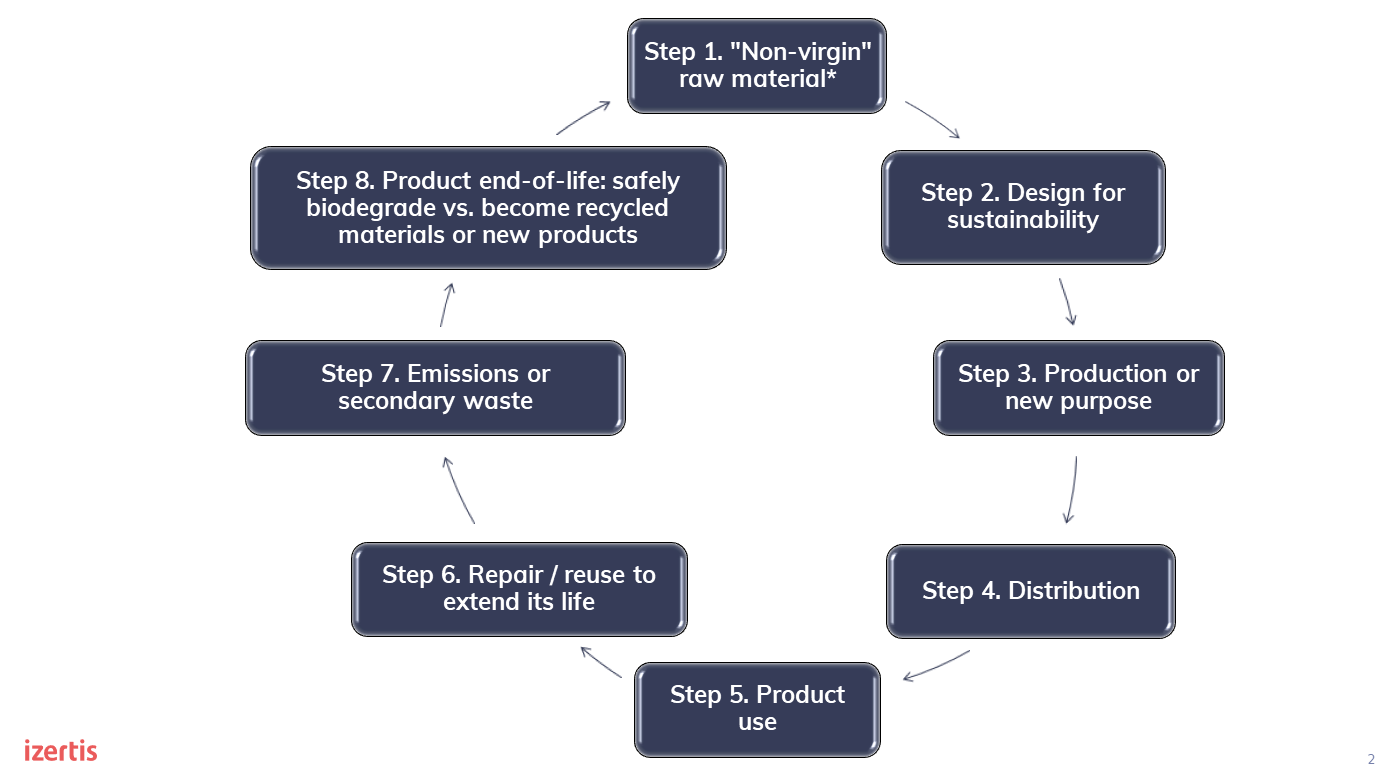
Technological butterfly effect
None of us are strangers to the technological blitz we face in our day-to-day lives: mobile phones that allow us to have augmented reality applications or become virtual reality devices through a gadget; words like bitcoins and blockchain that are becoming increasingly common in our everyday language; chatbots or virtual assistants that help us with online shopping or guide us in a hospital, and so on. All of these are examples of technologies that we use today, but do we know their origins? Do we know when they were created or the path they took to reach us? Do we know how long they will stay with us? Perhaps not even Iker Jiménez can answer these questions, but we will try to help and shed some light on them.
The origin of technology
Most of us are probably familiar with "The Butterfly Effect", either through the 2004 film of the same name or from the way in which Edward Norton Lorenz referred to his "Chaos Theory" in 1972. This theory can be explained simply with the following Chinese proverb: "The fluttering of a butterfly's wings can cause a hurricane on the other side of the world". Lorenz's theory showed that small variations in input data in dynamic and complex systems (such as the weather or artificial intelligence) could generate large differences in results, making long-term prediction difficult.
Let's think for a moment about all the movies or books we have enjoyed in the past and the effect they may have had on present-day technology. Could we be witnessing a butterfly effect?
Human-robot collaboration or human-technology collaboration and ethical implications
In 1942, Isaac Asimov formulated a set of rules that apply to most of the robots in his works, known as the "Three Laws of Robotics", which establish the way in which these robots must obey orders:
- First Law: "A robot may not injure a human being or, through inaction, allow a human being to come to harm".
- Second Law: "A robot must obey the orders given it by human beings, except where such orders would conflict with the First Law".
- Third Law: "A robot must protect its own existence as long as such protection does not conflict with the First or Second Law".
Today, in October 2019, a group of high-level experts in Artificial Intelligence from the European Commission presented the Ethics Guidelines for Trustworthy Artificial Intelligence. This document outlines the characteristics that AI-based systems must possess (legal, ethical, and robust) and must be followed when developing AI systems, especially to avoid humans feeling "attacked" by technology, which is essential, for example, in human-robot collaboration. In other words, this guide is an updated version of Asimov's Laws of Robotics, which would undoubtedly serve as an ethical guide for one of the first autonomous cars that our retina has ever seen: "Kitt," the undisputed co-protagonist of "Knight Rider" (1982).
Virtual Reality and Metaverse
And who can forget Sylvester Stallone's astonished face when Sandra Bullock gives him the first prototype of virtual reality glasses in "Demolition Man" (1993), which many of us have seen? Of course, the entire cast of "Ready Player One" (2018) would laugh at that prototype and even at some current Metaverse.
Data analysis and artificial intelligence
Other movies like "Pi" (1998) show the human need (and even obsession) to find correlations or functions between data - in this case based on the number "Pi" - through various formulas to find patterns of behaviour, predictions in the stock market, or any other aspect that can explain certain seemingly routine and/or random events.
Who inspired whom?
Thus, it could be that present-day technology arose thanks to the germ of those movies, and it could even be that some of those who currently investigate or develop technologies such as computer vision, artificial intelligence, blockchain, collaborative robotics, or any other, had seen some of those movies or read some of Asimov's books. It could be that indeed a technological "butterfly effect" has led us to where we are today. And if so, why not investigate more into today's technologies to inspire technologists and contribute our bit to create the technologies of the future?
The life of technology
As they say, "the present is today", so let's take a look at the life of some of the most relevant technologies applied today in different sectors of interest, from health and food to industry or banking.
Technology, health, and nutrition
They say that SPA comes, among other origins, from the Roman expression "Salutem per Aquam", associating medicinal water springs as a treatment for improving health. Although there is no clear evidence of that relationship between water and health, it shows that there are certain elements that can indirectly improve health. This is the case of the SYMMETRY project where various technologies such as computer vision, natural language processing and chatbots facilitate the detection of psychological or neurological pathologies in chronic patients, allow better care for patients with chronic and dependent conditions, or support the physician himself in diagnosing a disease.
As in the previous case, initiatives such as VARKINSON also apply these types of technologies, helping the neurologist monitor and follow up on Parkinson's disease, or as eHealth, allowing adolescent patients to cope with a chronic condition such as scoliosis in the most natural and least aggressive way possible.
Technologies such as computer vision or chatbots facilitate the detection of psychological or neurological pathologies in chronic patients
But technology also allows us to develop things that we can now say, "But what is this?" as Stallone must have thought when Bullock proposed using virtual reality glasses. Yes, we can proudly say that artificial intelligence is allowing us to automate the study of changes produced in tumour cell cultures (manufactured by 3D bio-printing) based on different variables such as time, drug presence, cell number, or any other significant variable, as has been carried out in IABION. But these are not the only initiatives where artificial intelligence is applied to improve the health of patients, there are also personalised knee implants (BIOPRINTIA) or the analysis of each patient's microbiome (ALIMES) according to their characteristics, thus adapting their nutritional diet to their own needs, seeking to maintain their well-being.
Technology and agri-food
Circularity and sustainability are words that are repeated like a mantra in news, ads, and other content accessible to our senses, but what is circularity really? Are circularity and sustainability synonyms? The obvious answer is no, they are not. Before we continue, we echo the words of the UN (United Nations) from March 2021, which highlight how the current linear economic model of "take-make-dispose" is not sustainable and is the main cause of climate change and resource depletion (water, raw materials, etc.).
The goal is to shift the focus towards what is known as a circular economy, which means a paradigm shift, a revolution in the way we design, produce, and consume. And this is where circularity fits in, as it is based on keeping the product in use for as long as possible following the following premises:

On the other hand, applied to our case, sustainability translates into the exploitation of a resource below its renewal limit. That is, consuming our resources (natural, mineral, etc.) responsibly, allowing them to remain available for future generations.
As it's best to practice what you preach, the N0WASTE project will help us understand this concept, as it aims to trace perishable food products through various technologies, including Artificial Intelligence, Blockchain, or IoT, in order to minimise loss, especially in the last mile. Additionally, the project also aims to work on reusing waste from these products to generate "biofuels" and even work on more sustainable packaging. This way, circularity and sustainability are intertwined.
Technology and Industry
As Murphy's Law says, "Anything that can go wrong will go wrong", so if we can't avoid mistakes, we can at least detect them and act accordingly. This is where the AIQAS project focuses its goal: through an inspection system, it detects multiple defects in various materials of pieces manufactured in continuous industrial production lines. KAIROS is another initiative where anomalies throughout the curing process of composite parts in the naval sector are also detected. In these projects, vision and artificial intelligence are key technologies.
In these projects, vision and artificial intelligence are key technologies
Technology and Banking
And if it turns out that the movie "Pi" is not as far-fetched as we think, and there are actually relationships out there between different elements that we cannot see? That's what quantum computing technology proposes to solve in sectors like banking, where multiple computing resources are currently required and this technology can simplify them. Projects like QAI - Quantum Artificial Intelligence aim to address this challenge.
The death of technology?
In general, it is difficult to say that a technology dies unless another one comes along and replaces or supersedes it for various reasons (technologically more robust and/or economical alternatives, better brand image, etc.). It already happened in its time with JVC's VHS or Sony's Betamax, where, aside from their own war, both were overtaken by DVD.
However, there are ways to extend the life of technology. In this sense, the European Space Agency or ESA has created what is known as ESA Business Incubation Centres or ESA BICs, precisely to avoid the premature death of technologies created by and for space, in which many resources have been invested for their development. Thus, these ESA BICs are a network of entrepreneurs who can, among other things:
- Developing applications that use space-based systems (such as satellite navigation, earth observation or satellite communication).
- Using space technologies in non-space applications.
Therefore, a priori, there are no elements that make us predict that a technology will die unless we find the secret formula based on Pi or any other "magic number", such as those used in nuclear fusion, that predicts it.
Are we living a butterfly effect?
Only time will tell if these technologies will continue to thrive in the future, but what is certain is that an obsolete or mature technology in one sector can be key and very innovative in another, as ESA BICs have shown us. What is also not up for debate is that our information-hungry minds will soon have new material to work with and who knows, maybe become the next Nobel Prize winners of the future.
So, as William Lawrence Bragg, Nobel Prize winner in Physics in 1915, once said - or is attributed to have said - "The scientist is not the person who gives the right answers, but the one who asks the right questions". Perhaps soon I will consider new questions...

